Everything You Need To Know About Drones
Table of Contents
Officially known as Unmanned Aircraft Vehicles (UAVs), drones have been in use by various militaries, security forces, and espionage organizations since the early/mid-20th century.
Shortly after the manned aircraft was invented, governments were already looking for ways of rendering those vehicles unmanned. This was meant primarily for military uses, such as intelligence gathering, target acquisition, use as decoys and ways of drawing enemy anti-aircraft fire during combat, and other scenarios in which unmanned aircraft could be beneficial.
A Drone By Any Other Name
The aviation term “drone” was coined in the 1930’s, as a dual reference: First, to the continuous hum which radio-controlled aircraft emitted. Second, to the British ‘Queen Bee’ aircraft, which was a remote-controlled device used for target practice by the Brits in the 1930’s.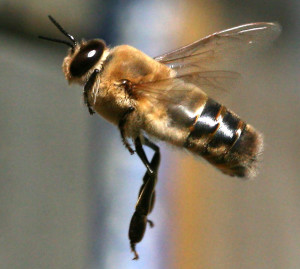
The word “drone” was the name given to a type of male honeybee, whose only job is to mate with the queen bee. Since the drone is not a worker bee, the word had become synonymous with idleness and/or laziness. From bees, the term moved on to include lazy humans. Later on, the word became a verb. The phrase “to drone on” is still used to describe a monotonous style of speech, which resembles the hum of a bee.
Drone aircraft continued to develop, and by the time World War II came around, radio-controlled aircraft were being used for target practice, as well as for assault. This gave yet another use of “drone”, this time as a verb. To drone an aircraft meant to turn it into a pilotless vehicle.
These days, the term “drone” is used by the majority of the public in order to describe any sort of aircraft which is unmanned, from the $17,000,000 military-grade, hunter-killer MQ-9 Reaper – to the $36 Eachine H8C Quadcopter.
This is a thorn in many sides, and there is actually an ongoing debate over the use of the word. Aviators, controllers, and government officials are generally opposed to using the word “drone”, opting to use more technologically-appropriate terms such as UAV or UAS (Unmanned Aircraft System = a vehicle supported by a ground crew).
The debate over the name is still raging on, but as Shakespeare said so many years ago: “what’s in a name?” In other words – a drone by any other name would still be as awesome. For the purpose of this article, I will be referring to any and all UAVs as drones, so don’t be offended. And, on a personal note, it seems that this is where that train is going to stop anyway. Aviators and officials may be ticked off, but the chances of the American public switching from “drone” to “UAV” is pretty slim. If you can’t beat them – join them.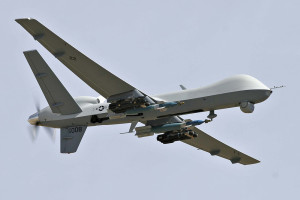
This differences between military UAVs and civilian drones are many and varied, but the technology which was previously used only by security forces and government agencies is now seeping through and reaching the general population.
I will be focusing on civilian-oriented devices in this post. That is, ones meant to be used by filmmakers, photographers, hobbyists, and every day Joes. The civilian drone industry is positively booming, all over the world. In the United States, the Federal Aviation Administration (FAA) runs a registration program for drone operators, both amateur and professional.
Details on the FAA’s drone registration process can be found here.
(link to https://www.faa.gov/uas/registration/)
5 Things Found In Every Drone
 So, let’s begin to break it down. What is it that makes up your everyday drone? There are several core components which are shared by nearly all unmanned aircraft.
So, let’s begin to break it down. What is it that makes up your everyday drone? There are several core components which are shared by nearly all unmanned aircraft.
First, there is the drone’s body, which differs from one type of drone to another. Airplane drones have a fuselage and wings, helicopter drones have tail rotors, and multi-rotor drones (like the immensely popular quadcopter model) have a frame with arms.
Second, every drone requires a power supply of some kind. Many civilian drones use some kind of Lithium-Polymer (Li-Po) battery, but there are larger devices which make use of fuel, and even ones which utilize solar power.
Third, on board every drone is a computer system, also known as the drone’s hardware. This is the brains of the drone. Because of that, it is an element which can be unique, made to fit the specifications of a particular model. When dealing with drones flown by hobbyists, the term “flight controller” is often used to describe the system which governs the drone’s various operations.
Fourth, there is the motor. There are exceptions to the following rule, but essentially a motor is needed for every single blade which is being used. In other words – for a quadcopter, you will need four motors. For a hexcopter – six motors, and so on.
Fifth, the remote control. You can either build one or buy one, but you definitely need one. The controller can be a standalone, dedicated device, or it can be used in conjunction with another type of device, such as a smartphone or tablet. The latter controls usually sync up by way of a designated application.
So, these are the basic elements of just about every drone. Obviously, these are only the beginning. There is always more that can be added, improved on, and changed around. Many civilian drones come pre-equipped with GPS, compass, camera, gyroscope, lights (mostly LEDs), and other kinds of sensors (internal and external).
A Closer Look At Civilian Drones
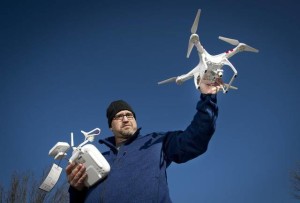 Now that we have covered the basics, let’s take a look at some of the most popular civilian drones out there. I have split them up into several categories, based on their size and intended uses. Obviously, you could choose to use a racing drone as a child’s toy, or alternatively use a professional photography drone as a racer. Nothing is written in stone. I listed a few models as examples, and in no particular order. There are many others brands and models out there, which are just as deserving of a nod.
Now that we have covered the basics, let’s take a look at some of the most popular civilian drones out there. I have split them up into several categories, based on their size and intended uses. Obviously, you could choose to use a racing drone as a child’s toy, or alternatively use a professional photography drone as a racer. Nothing is written in stone. I listed a few models as examples, and in no particular order. There are many others brands and models out there, which are just as deserving of a nod.
Another thing worth mentioning, when discussing any drone, is price. Money is always an important factor, and the prices for these items are pretty dynamic. The cost of the drones I have listed is taken mainly from Amazon.com, but they are not the final numbers by any means. You can always find a bargain somewhere, and of course there is the option of second-hand purchasing.
Toy Drones
For your kids, or for the kid in you! These are perfect for beginners, crash-prone fliers, and those who just want to have some fun.
UDI U818A – a 2.4 GHz, 6-axis gyro quadcopter, equipped with a 2MP, 720p HD camera. Features include headless flight mode, which keeps direction regardless of the way in which the drone’s nose is pointed, and a return to home function.
Price: $69.60
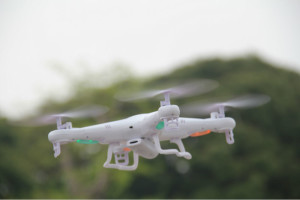 Syma X5C – One of the more popular models, This 2.4 GHz, 6-axis gyro quadcopter comes equipped with a HD camera and 2GB memory card. It has a decent flight time of 7 minutes and has a unique feature that allows it to perform flips at the press of a button. ( They’ve also come out with what is basically a wifi version of this drone, the Syma X5SW – $51.19 )
Syma X5C – One of the more popular models, This 2.4 GHz, 6-axis gyro quadcopter comes equipped with a HD camera and 2GB memory card. It has a decent flight time of 7 minutes and has a unique feature that allows it to perform flips at the press of a button. ( They’ve also come out with what is basically a wifi version of this drone, the Syma X5SW – $51.19 )
Price: $43.49
UTO U960 – a first person view (FPV) hexcopter, with real time Wi-Fi video feed, for use with a smartphone or tablet. The quality of the camera isn’t amazing, but as a toy it certainly delivers. If you are looking to get into FPV flying, this is a great suggestion for a first purchase.
Price: $89.99
Photography Drones
 A picture (or photo) is worth 1,000 words. So they say. Never has this been a truer statement. With these drones, you will be able to get stunning, beautiful, clear, crisp, bird’s eye images and footage. There is nothing quite like watching your city or home town unfold beneath you, as your drone goes soaring, higher and higher into the sky. These are drones which can make that happen in the best possible way, and provide the best outlet for your creativity to shine through.
A picture (or photo) is worth 1,000 words. So they say. Never has this been a truer statement. With these drones, you will be able to get stunning, beautiful, clear, crisp, bird’s eye images and footage. There is nothing quite like watching your city or home town unfold beneath you, as your drone goes soaring, higher and higher into the sky. These are drones which can make that happen in the best possible way, and provide the best outlet for your creativity to shine through.
DJI Phantom 3 Professional 4K – definitely one of the best out there. This drone is impressive in every respect. It comes equipped with many sensors, meant for stabilizing and positioning both indoors and outdoors. The Phantom 3 Professional includes everything necessary for high-quality aerial photography: GPS navigation, auto takeoff and landing, powerful battery, and the brilliant DJI Pilot app for smartphone or tablet.
Price: $1,349
Yuneec Q500 Typhoon – the quality of this drone’s image and video is outstanding. The Q500 is so steady and so reliable, that many consider it to be the go-to photography drone. The transmitter has a built-in screen which receives video via the craft’s 12MP, 1080p HD, 60fps camera. Comes with an 8GB MicroSD card.
Price: $669
LANDVO XIRO Xplorer V – first off, there’s the 14MP HD camera. Attaching your mobile to the remote will allow you to control the camera and monitor your flight from your phone or tablet. With an ergonomic remote, this is certainly one of the easiest flight experiences in the market today. With a flight time of 20-25 minutes, this is one drone which is affordable and fun to use. Landvo’s Range Extender makes it even easier to control the drone and the camera from your phone, even at long ranges.
Price: $859.99
Racing drones (FPV)
Got a need for speed? These racing drones are specifically designed for acceleration, rather than stability. Many of them have the option of adding a camera, transmitter, and monitor, for quality FPV flying.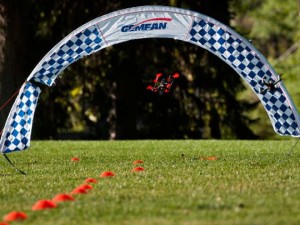
ARRIS X-Speed 250B – this drone’s frame is made of glass or carbon fiber, and it includes a camera. This is a drone which is very durable. It is ready to fly right out of the box, and after some training (and purchasing a monitor), you will be able dominate the FPV racing scene.
Price: $349
Walkera Runner 250 – an FPV-ready quadcopter with pre-installed HD camera and video transmitter. A monitor is not included, though. Comes with a gift belt and logo hat. Meant for those who are looking to get into FPV racing.
Price: $200+, depending on the kit.
Eachine Racer 250 FPV Quadcopter – this one is certainly built for speed. It has very powerful motors, adjustable night-vision-supported camera, and its high-sensitivity controller comes equipped with a 7-inch monitor. Flight time is a little low (10-14 minutes), but it performs very well.
Price: $359.99
Mini Drones

Less is more, right? With these drones, you will be able to experience the thrill and joy of flying a remote controlled copter, but at a reduced price, and – sometimes – with increased flight time (compared to the larger, heavier drones). If short range remotes are not an issue for you, the mini may be right up your alley!
Eachine H8 Mini Quadcopter – so small, it can fit in the palm of your hand. This drone’s features include headless mode, one key return, 360 degree rolling, and a 6-axis gyroscope for stability. Lightweight, with a low charge time of about 45 minutes.
Price: $30
Syma X11 – this drone comes with 2 speeds, and a spare set of propellers. It is meant for indoor or outdoor use, and has a 6-axis gyroscope for a stable flight experience.
Price: $27
Holy Stone F180C Mini – this is a tiny drone which comes with its own 720p camera, a 2GB memory card, and a card reader. It also includes 8 spare blades, plus an extra battery. It can hover, flip, roll, and perform very well as long as it isn’t too windy. Good value for your money.
Price: $59.99
Compensating For Not Having Wings
 Humans cannot fly on their own. It was simply not meant to be. What we can do, however, is experience the joy of flight vicariously, through machines and aircrafts. To some, civilian drones may seem like expensive toys and nothing more. Chances are, those people have never had the pleasure of flying a FPV quadcopter over their neighborhood, or racing drones with their friends through an open field.
Humans cannot fly on their own. It was simply not meant to be. What we can do, however, is experience the joy of flight vicariously, through machines and aircrafts. To some, civilian drones may seem like expensive toys and nothing more. Chances are, those people have never had the pleasure of flying a FPV quadcopter over their neighborhood, or racing drones with their friends through an open field.
When it comes to photography and cinematography, this is certainly a game-changer. Complicated camera work, involving cranes and other apparatuses, will always be used. But, drone photography presents an exciting new option for those who are interested in capturing aerial images and video.
There are festivals and events, all over the world, which are dedicated to drone photography and cinema. This isn’t just a fad, trend, or passing phase. Every day, more and more people are discovering the beauty of drones.
Not To Drone On But…
Drones, UAVs, UASs – however you want to call them, they are here to stay. With each passing year, they are becoming more advanced, more appealing, and more affordable. If you haven’t jumped on the wagon, but are interested in getting into the wide world of unmanned aviation, just do it. Do not hesitate. Get yourself an inexpensive Syma or UDI (standard or mini), and get on up there. It really is a wonderful feeling, watching your copter as it is flying through the sky.
The view from higher altitudes is like no other. It is absolutely captivating, and it has the potential to ensnare the minds of those who are looking at it. The more you fly your drone, the more you will find yourself falling in love with that feeling of freedom, boundlessness, and independence that it brings with it. I suppose humans are suckers for flying, and in my opinion there is no wonder as to why that is.
Don’t be surprised if you find yourself wanting to invest more time, money, and energy into drones. Don’t be surprised if you end up wanting to build a drone of your very own, right at home. It is a hobby that so many people are embracing, because there is something special to it. Don’t believe me? Just try it. Give it a shot. I think you will agree that it is a unique experience, and that it can help change your perspective in more ways than one.
Plus, the ability to share aerial images and videos with friends and family is yet another bonus, which makes this “expensive toy” something which not only piques the ever-growing interest of human creativity and curiosity, but also helps bring people together, in a time when we are seemingly growing further and further apart. I now leave you with a video containing amazing footage shot from drones.
No comments yet.